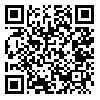Volume 20, Issue 77 (4-2011)
JGUMS 2011, 20(77): 69-80 |
Back to browse issues page
Download citation:
BibTeX | RIS | EndNote | Medlars | ProCite | Reference Manager | RefWorks
Send citation to:



BibTeX | RIS | EndNote | Medlars | ProCite | Reference Manager | RefWorks
Send citation to:
Rahmati Najar kolaei F, Niknami S, Amin Shokravi F, Farmanbar R, Ahmadi F, Jafari M. Family System and Its Effect's on HIV/AIDS High Risk Behaviors: A Qualitative Study. JGUMS 2011; 20 (77) :69-80
URL: http://journal.gums.ac.ir/article-1-161-en.html
URL: http://journal.gums.ac.ir/article-1-161-en.html
1- Baghiyatolah University
2- Tarbiat Modares University , niknamis@modares.ac.ir
3- Tarbiat Modares University
4- Guilan University of Medical Sciences
2- Tarbiat Modares University , niknamis@modares.ac.ir
3- Tarbiat Modares University
4- Guilan University of Medical Sciences
Abstract: (9588 Views)
Abstract Introduction: The statistics of HIV/AIDS patients are increasing in the world and Iran. Since previous studies indicated that family structure and communication had an important role in high risk behaviors engagement, Assessing role of family system in high risk behaviors would be help to explore solving problem and prventing high risk behaviors. Objective: To determine the effect of family on high risk behaviors. Matarials and Methods: This thematic analysis study with qualitative approach was done during 10 months in Behavioral Counseling Clinic of Imam Khomeini Hospital and West Clinic in Tehran. The participated patient were selected by purposeful sampling and data was obtained from in dept and semi-structured interview with open end questions. Total interview was recorded and typed word to word. For analysies the results review of transcripts, themes gained from data and coded categorized were done. Results: Among 61 HIV/AIDS patients 45cases were HIV positive and 16 cases were AIDS patients with range age 21-42 years old with average age of 29.7± 4.86. There were 62.3% males and 37.7 were females. Majority of them was single with secondary and high school educational level. Themes consisted of: 1- defact in family function 2- vulnareble stacture of family 3- risky family norms. Conclusion: This study showed that core variable was inadequate support of family.Then increasing support of family in adolescents and family base intervention can be reduce high risk baheviors and HIV/AIDS incidence.
Review Paper: Research |
Subject:
Special
Received: 2013/11/10 | Accepted: 2013/11/10 | Published: 2013/11/10
Received: 2013/11/10 | Accepted: 2013/11/10 | Published: 2013/11/10
| Rights and permissions | |
 | This work is licensed under a Creative Commons Attribution-NonCommercial 4.0 International License. |






